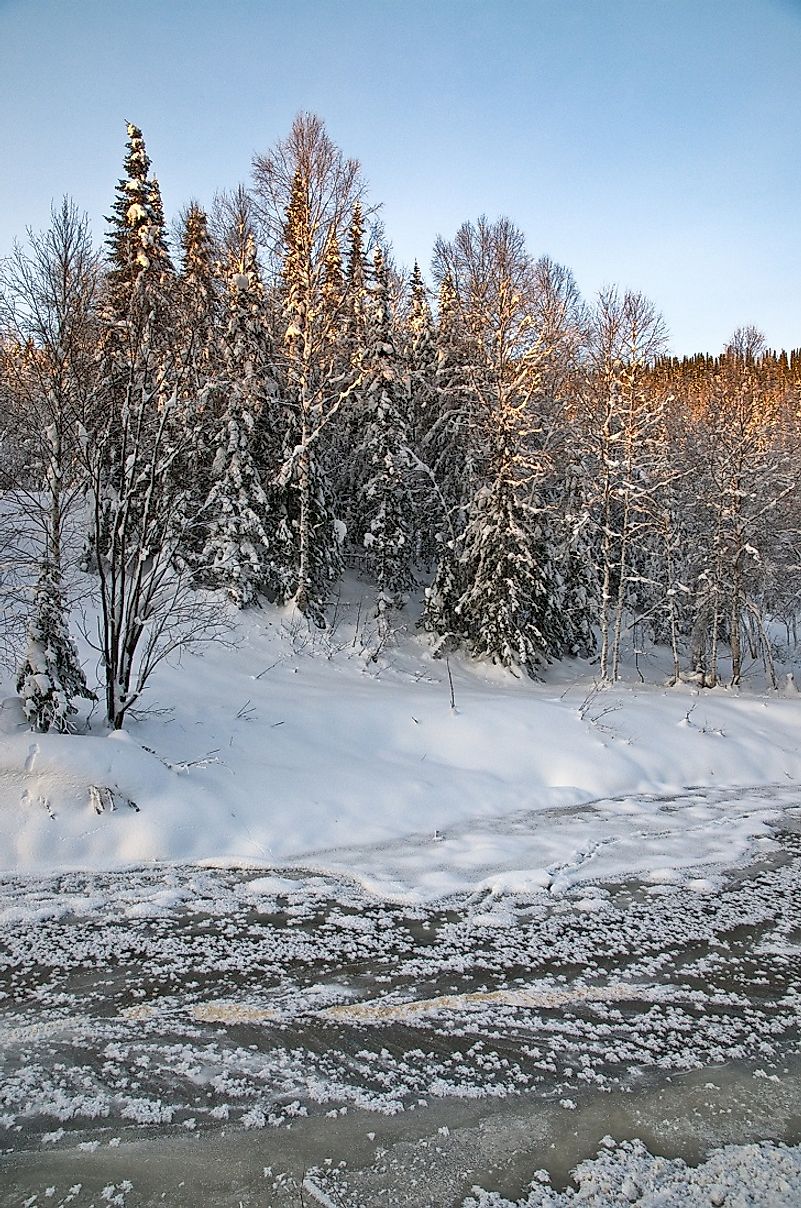Where Is The Kuznetsk Depression?

5. Description
The Kuznetsk depression is the geographical term for the substantial part of Central Siberia that is home to several mesozoic basalt mountain ridges, with heights ranging between 600 and 740 meters. These are inclusive of the Karakan Mountains, Taradanov's Ridge, Saltymakov's Ridge, and several smaller foothills. The feature of a relief indicates the divide of the area into mountainous and plains parts. Mountain ranges in the form of a horseshoe fringe are located in the middle of the Kuznetsk Basin. In the south, they are adjacent to the ridges of the Northeastern Altai, and consist of dissected arrays of Biysk Mane, the mountainous Shoria, and the higher Abakan Range (with peaks up to 1,900 meters). To the northwest, the Salairsky ridge is stretching its slopes gently to the west. Then, more steeply rising as if it were clearly visibly standing, is the Tyrgan ledge in the direction of the Kuznetsk Basin, making the whole basin look like a gigantic crater. The average height of the ridge is just 400 to 450 meters, however, and even its highest peaks fail to reach in excess of 600 meters. The Kuznetsk Altai mountains climb to the east of the Kuznetsk Basin. The peaks of the southern part reach 1,800 to 2,000 meters, and the highest point of the entire mountain chain, the Upper Tooth mountain, is 2,178 meters. The territory of the Kuznetsk Depression is divided across this system of disconnected arrays by deep river valleys.
4. Historical Role
Among the taiga plants there are the species typical to the deciduous forests of the Russian Plains and those of the Russian Far East, but peculiar to the Siberian taiga. These include linden (Tilia sibirica), wild ginger (Asarum europaeum), woodruff (Asperula odorata), and giant fescue (Festuca gigantea). All of these are probably relics of deciduous forests that had existed in the Kuznetsky Alatau in the Neogene Period, when the whole territory was covered under a prehistoric sea. Favorable climatic conditions, high fertility of the soil, and the flat terrain of the Kuznetsk Basin contribute to the development of agriculture and animal husbandry. The Kemerovo region is one of the first places in Siberia in potato yields, as it is also in grain crops, including wheat, oats, and rye.
3. Modern Significance
The depression contains a coal-mining area known as the Kuznetsk Basin. Coal deposits, per beginning of 2016 estimations, are at 735 billion metric tons, and these resources are spread over an area of 26,700 square kilometers, with an underlying depth of 1,750 meters. The major cities of the region are Kemerovo and Novokuznetsk. These are also the centers for the machine construction, chemical industry, and metallurgy related to extracting and processing the coal.
2. Habitat and Biodiversity
Forests are in abundance in this part of Siberia, being the important natural and economic resource of the Kuznetsk Depression region save for coal. Timber reserves in the Kemerovo district alone account for more than 400 million square meters. The taiga species are the predominant ones among animals here. In the forest and valleys you can meet stoats, weasels, squirrels, wolverines, badgers, and pikas. In Kuznetsky Alatau and the Swan River Basin there are sables, deer, musk deer, and otters. The most well-known resident birds here include grouses, Boreal owls, Siberian Jays, nutcrackers, Black woodpeckers, Three-toed and Gray-haired Picus canus, cross-bills, and others.
1. Environmental Threats and Territorial Disputes
Around the larger cities there has developed horticulture and dairy farming in response to the demand for these agricultural products among the urban populations across large parts of Siberia. In 2015, pursuing the goal of regional agricultural development, the Governor of the region announced the free land distribution of up to the size of 2.5 hectares (7 acres) for local farmers and individuals who decided on moving into the Kuznetsky District. Hopefully, this agricultural development will not come at the coast of endangering the region's wildlife.











